4 European Events Harmonizing Art, Nature, and Techno Music
Techno and electronic music have always shared an intimate relationship with art, intertwining rhythms, beats, and melodies with visual expressions...
Celia Leiva Otto 30 May 2024
The Floralia festival was celebrated in Ancient Rome in honor of the goddess Flora. Because there is nothing more beautiful than flowers and, especially flowers in art, let’s honor the ancient tradition and explore our virtual “garden.” Of course, the garden of art history! Let’s pick together the best flowers in art and discover their meanings.
According to Roman mythology, Flora was the goddess of vegetation who was in charge of making flowers bloom every spring. The celebration of the Floralia festival, which took place in the city of Rome and its surroundings, was held between April 28 and May 3 of each year. In the beginning, these festivities had a popular and country character but later evolved into something more erotic and licentious.
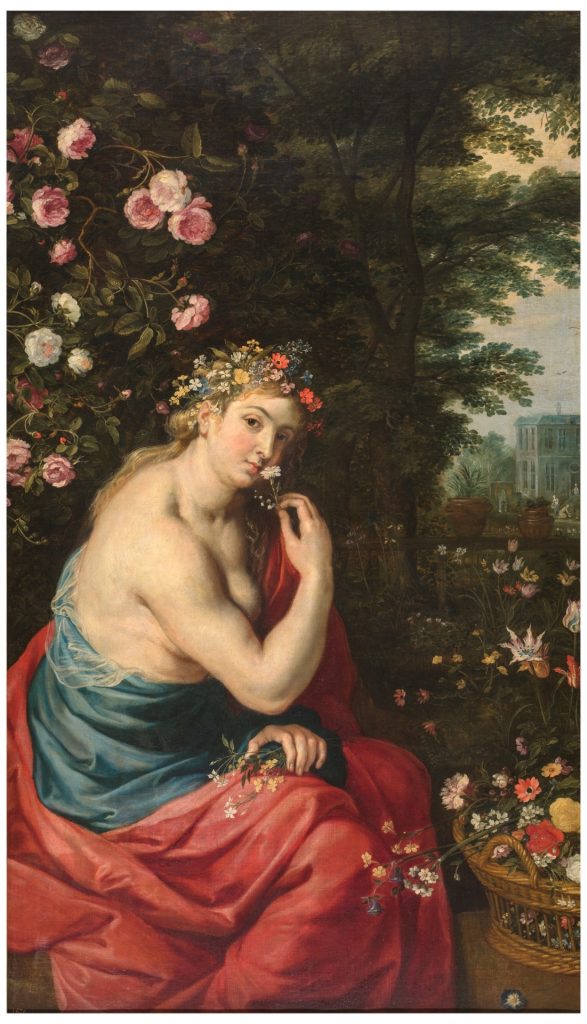
Flowers in art: Peter Paulus Rubens, The Goddess Flora, 1625, Museo del Prado, Madrid, Spain. Museum’s website.
In this masterpiece depicted by the Baroque master Peter Paul Rubens, we can see the Goddess Flora wearing a wreath of flowers. The Flemish painter executed with great delicacy and sensitivity the painting, but also managed to convey the feminine sensuality of the divine character. The canvas becomes a floral explosion! One may think that all the existing flowers could already be found in this painting. In addition to her crown, the goddess is surrounded by roses, wildflowers, and baskets filled to overflow with flowers. On her lap rests a small bouquet. She is thoughtfully holding between her fingers what appears to be a daisy and some bellflowers. In the distance, we can also glimpse some female characters filling their baskets with flowers.
What would a garden be without its roses? Considered by many to be the queen of flowers, probably the one most represented of all flowers in art, the rose has multiple meanings. The best known are love, romance, and passion. It is not surprising, then, that the rose is one of the symbols of Venus.
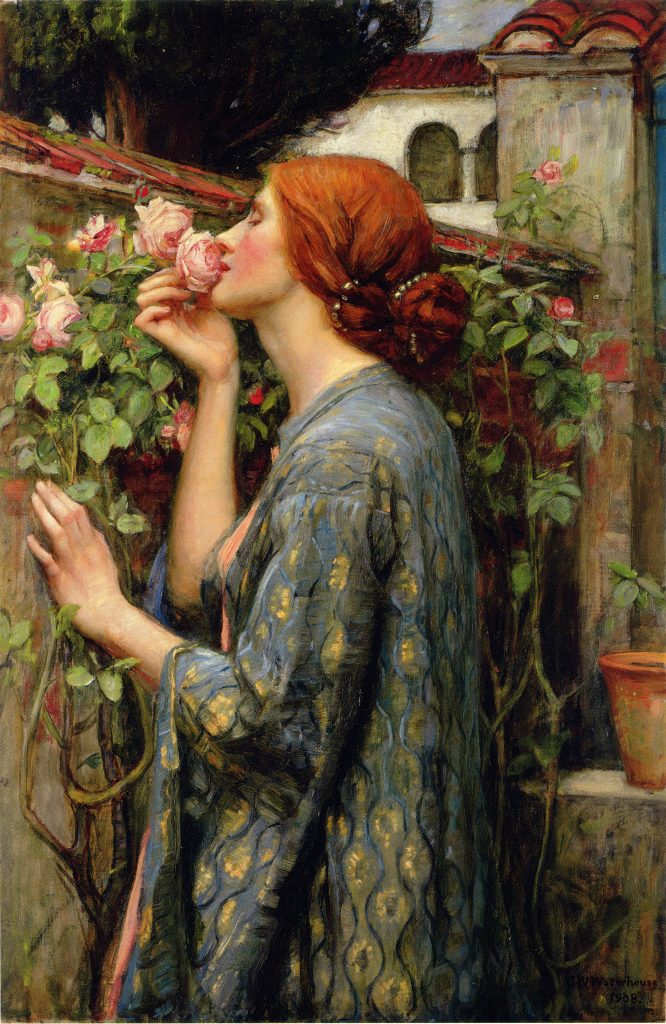
Flowers in art: John William Waterhouse, The Soul of the Rose, 1908, private collection. Wikimedia Commons (public domain).
In the Soul of the Rose, the rose appears as a symbol of desire and love, but also of nostalgia and melancholy as the woman seems to evoke her beloved or remember their passionate love story. In this artwork by John William Waterhouse, as was common among the Pre-Raphaelites, romanticism, sensuality, mysticism, and symbolism coincide.
Other essential flowers in our garden are peonies! White peonies are often associated with shyness and innocence, while red peonies tend to symbolize wealth, prosperity, honor, and power.
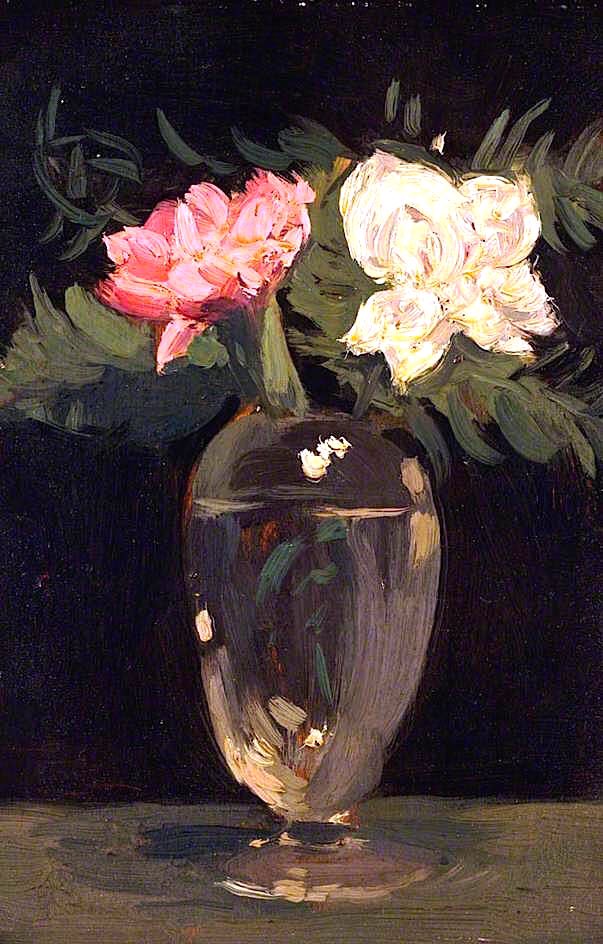
Flowers in art: Samuel John Peploe, Peonies, 1900-1905, National Galleries of Scotland, Edinburgh, UK. Museum’s website.
In this still life, the Scottish colorist Samuel Peploe, inspired by the old masters, plays with the dark colors of the background contrasting them with the intensity and brilliance of the flowers.
Another of the most represented flowers in art is the lily. In Christianity, the lily has been associated with chastity, purity, and virginity. That is why it is very common to see the lily present in all the representations of The Annunciation. Note the detail of the lily in the vase on the table in this artwork by the Early Netherlandish artist, Robert Campin. It is no coincidence that the flower chosen by the painter is a lily.
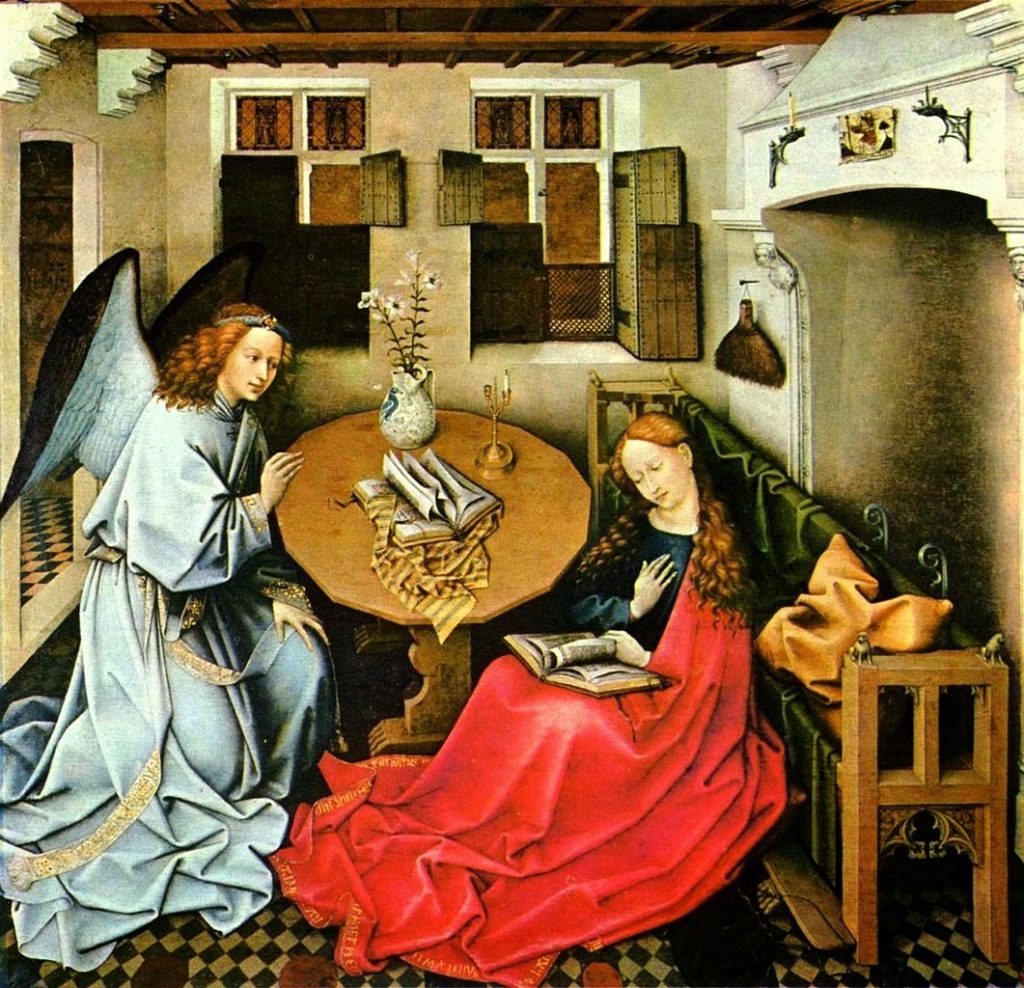
Flowers in art: Robert Campin, The Annunciation, 1430, Royal Museum of Fine Arts of Belgium, Brussels, Belgium. Wikimedia Commons (public domain).
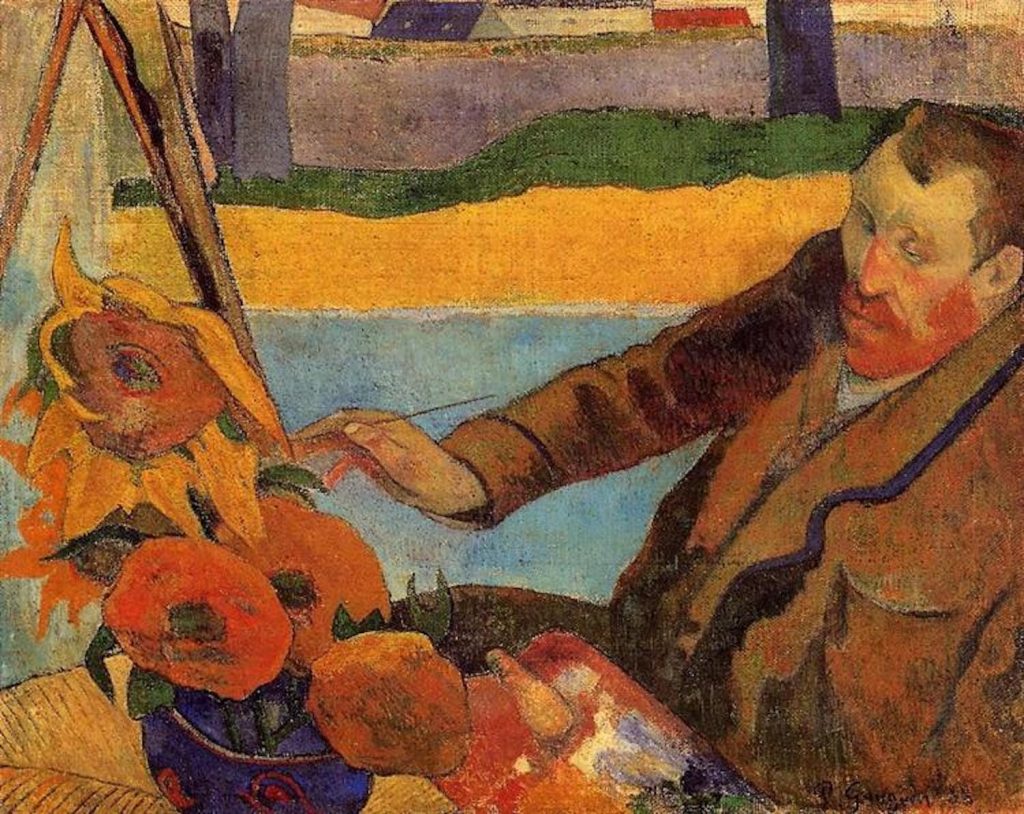
Flowers in art: Paul Gauguin, Van Gogh Painting Sunflowers, 1888, Van Gogh Museum, Amsterdam, Netherlands. Wikioo.
We do not know exactly what Van Gogh was thinking while creating his beautiful and famous Sunflowers, but in art and literature, the sunflower is a symbol of unconditional devotion. Above you can see his friend, Paul Gauguin, depicting Van Gogh working on his Sunflowers.
By adding a sunflower to this self-portrait, the Baroque painter Anthony van Dyck showed his loyalty and devotion to Charles I of England.
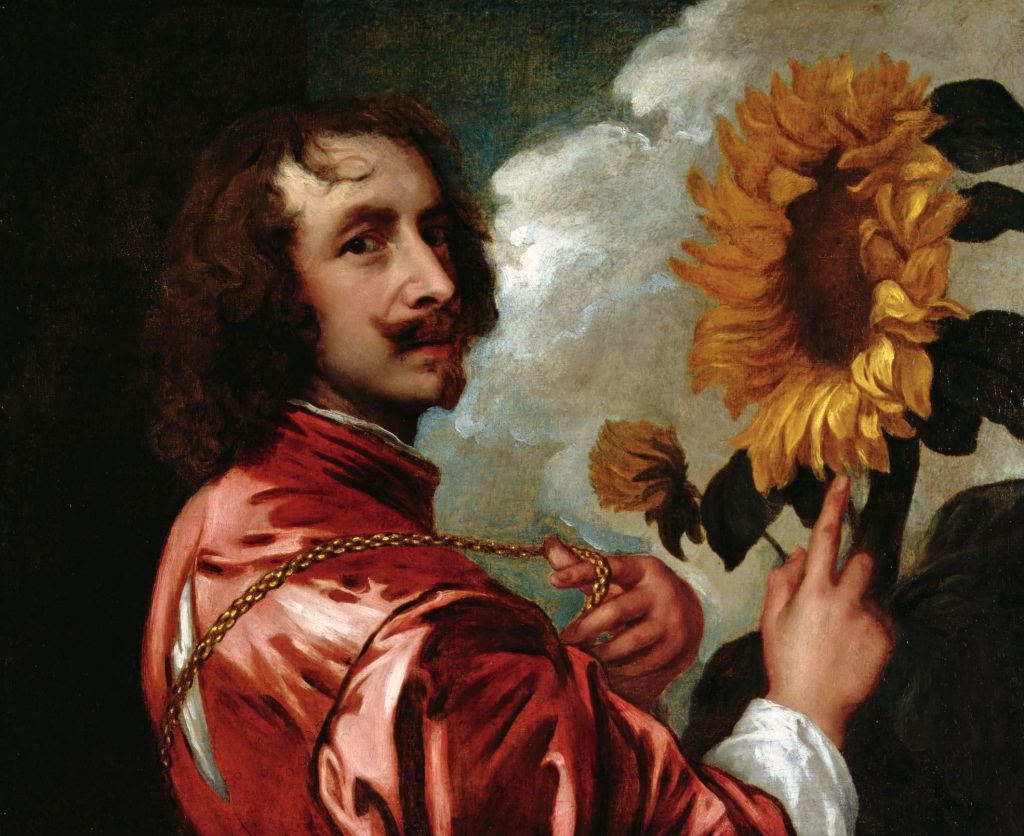
Flowers in art: Anthony van Dyck, Self-portrait with Sunflower, 1632, private collection. Wikimedia Commons (public domain).
No, it’s not just the name of a movie, the Tulip Fever or “Tulip mania” was real! It was a phenomenon that occurred in 17th-century Holland. The obsession with tulips led to speculation with tulip bulbs sold at exorbitant prices, leading to an economic bubble and a financial crisis in 1637.
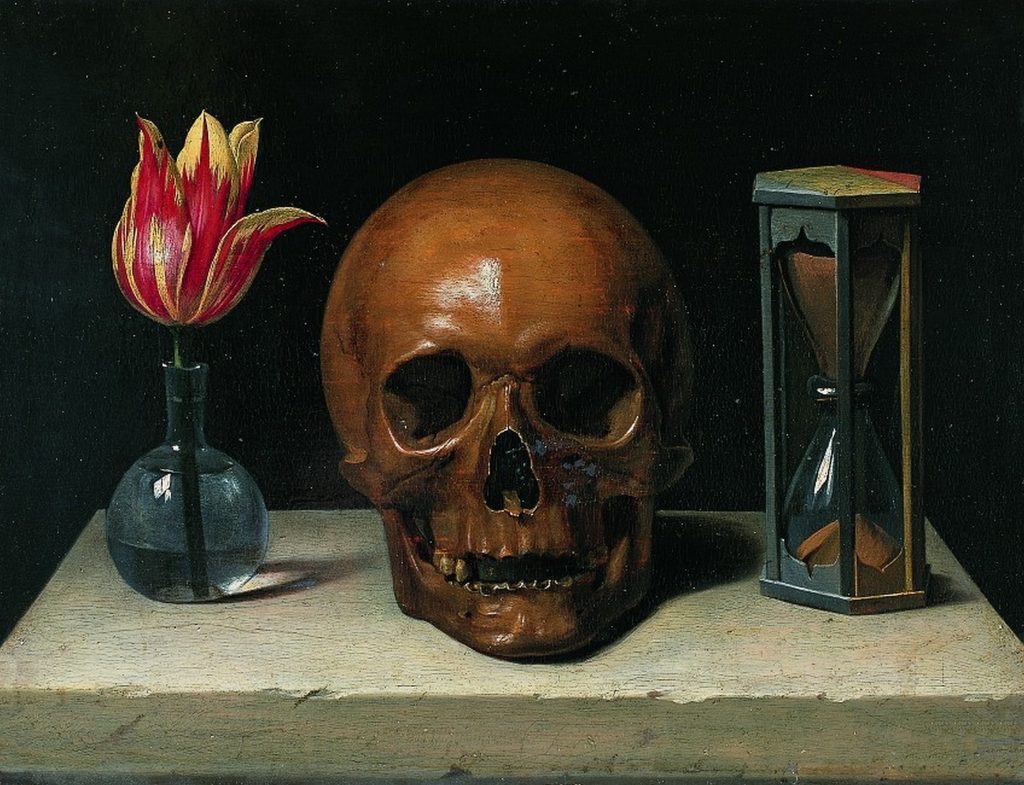
Flowers in art: Philippe de Champagne, Still-Life With a Tulip, Skull, and Hourglass, 1671, Musée de Tesse, Le Mans, France. Masterwork Fine Art.
Thus, the tulip became the main subject of many still lifes of the time, becoming a symbol of the vanity, passing of time, and ephemerality of earthly things.
Legend has it that anemones were born from the blood of Adonis who was wounded by a boar. That is why anemones are associated with pain, loss, and death.
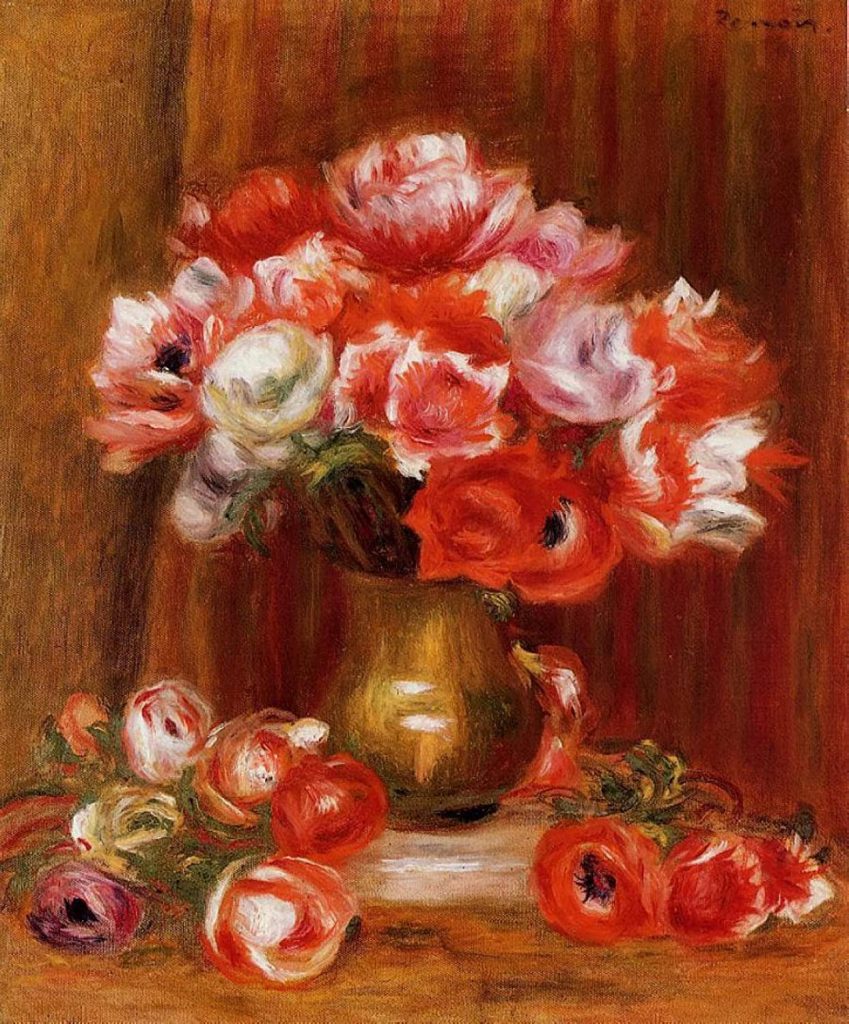
Flowers in art: Pierre-Auguste Renoir, Anemones, 1909, private collection. Wikimedia Commons (public domain).
Despite their usual symbolism, we look at the optimism, joy, elegance, and beauty of these anemones by Pierre Auguste Renoir.
Perhaps lesser-known, but with a wonderful scent, white lilacs are the symbol of youth and innocence, while purple lilacs represent first love. Oh, by the way, they are my favorite flower!
This artwork by the representative of Impressionism, Mary Cassatt, is a delight!
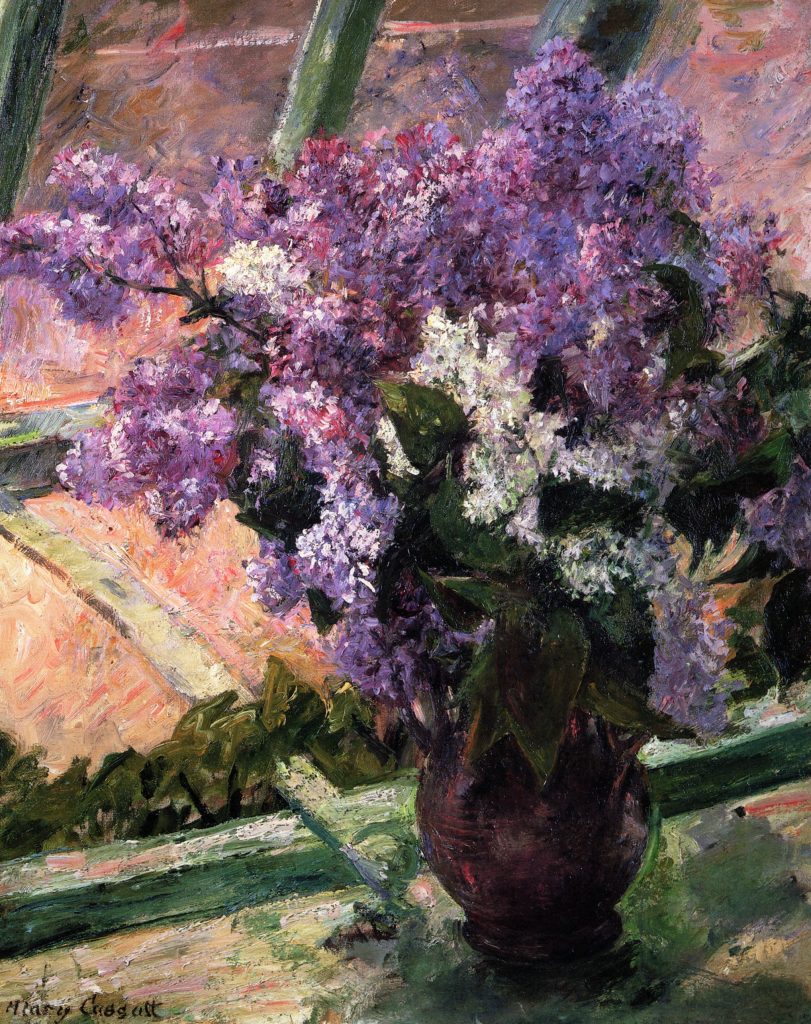
Flowers in art: Mary Cassatt, Lilacs in a Window, 1880, The Metropolitan Museum of Art, New York, NY, USA. WikiArt.
Poppies are associated with commemoration and remembrance, being in some countries the symbol that commemorates the fallen soldiers in the First World War. The poppies are mainly associated with sleep because it was for years used in medicine as narcotics for rest and sleep.
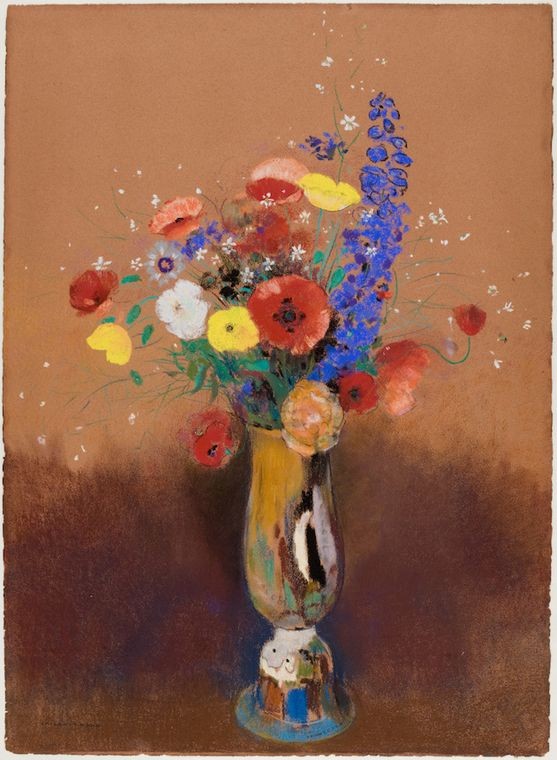
Flowers in art: Odilon Redon, Bouquet de Fleurs Des Champs Dans Un Vase à Long Col (Bouquet of Field Flowers In A Long-necked Vase), 1912, Musée d’Orsay, Paris, France. Phania Phenix.
Therefore, it is not by chance that a Symbolist painter like Odilon Redon has chosen this flower as the protagonist of his still life, transporting us to an oneiric terrain.
DailyArt Magazine needs your support. Every contribution, however big or small, is very valuable for our future. Thanks to it, we will be able to sustain and grow the Magazine. Thank you for your help!